The story of Fender Guitars in an interactive timeline

HISTORY IN THE MAKING
From Fender's earliest "Woodie" amplifiers to the new American Acoustasonic Fender Telecaster, every Fender is designed to deliver the iconic sound, style and feel known and loved by musicians all around the world.
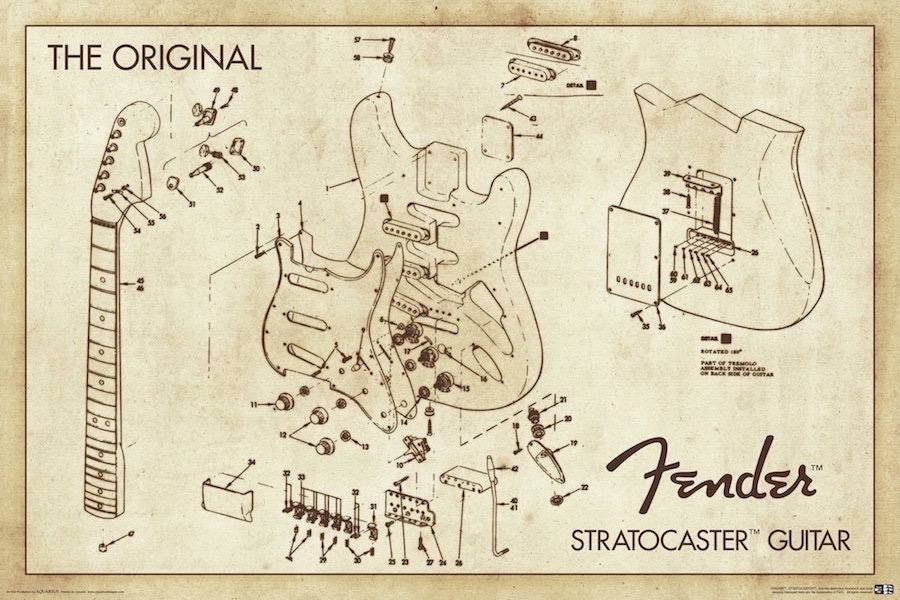
FENDER MUSICAL INSTRUMENTS ESTABLISHED.
In one fell swoop, Fender revolutionizes the solid-body electric guitar and bass. The radical look, feel, sound and unorthodox (but simple) manufacturing techniques will change the course of the musical instrument industry and popular music in the process.
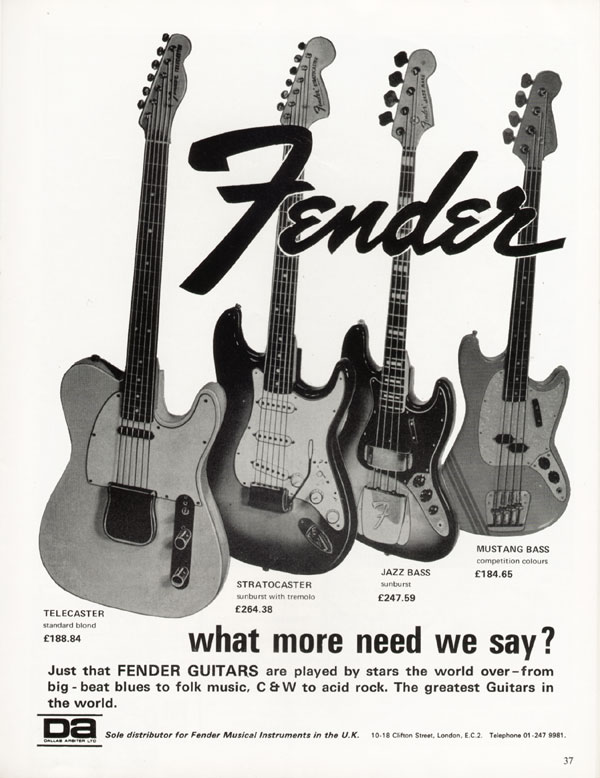
Here Comes The 'Tele'
In 1950, Fender introduced the first mass-produced solid-body electric guitar, the Fender Telecaster ("Tele") (originally named the Broadcaster for two-pickup models and Esquire for single-pickup). Boasting a comfort contoured body, advanced electronics and a built-in, pitch shifting vibrato system, the 'Tele' will become the world's most recognized electric guitar. Its versatile sound will make it the choice of popular music's most renowned players.

THE PRECISION BASS INTRODUCED
Following its success, Fender created the first mass-produced electric bass, the Precision Bass (P-Bass).

STRATOCASTER INTRODUCED
In August 1954 the Fender Stratocaster takes the music world by storm

JAZZMASTER INTRODUCED
With an offset waist, the Fender Jazzmaster offered striking style and a more focused tone with less low end and brighter midrange. It was designed to capture the Jazz guitar market. Not content to just produce guitars that also produced the Fender Rhodes, and electric piano though mass production didn't happen umtil the 1970's.
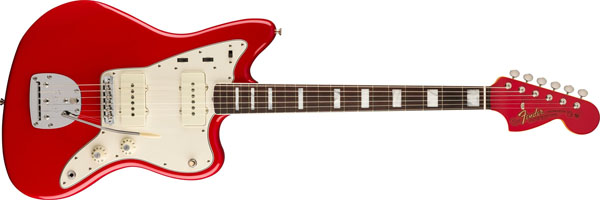
JAZZ BASS INTRODUCED
Already the gold standard for electric guitar and bass amplification, newly revamped tube-driven Fender Amplifier models like the Twin Reverb, the Deluxe Reverb, Princeton Reverb, Super Reverb and Vibrolux continue to be the go-to amp voice for rock, country, jazz and blues musicians. Built-in effects, a variety of power output capabilities and sparkling stage cosmetics establish a new Fender benchmark.
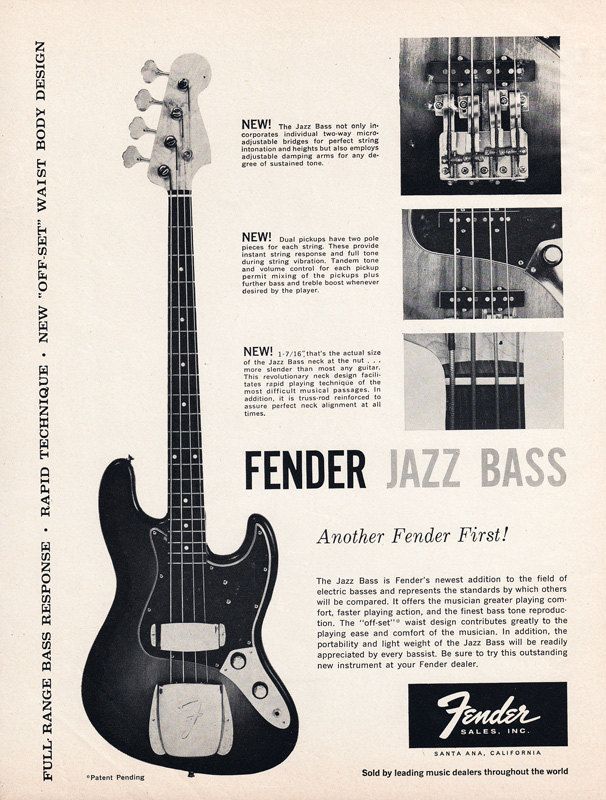
FENDER AMPLIFIER RENAISSANCE
Bob Dylan makes a major statement at the Newport Folk Festival, as the typically acoustic troubadour brought out a Fender Stratocaster and an all-electric band, shocking the audience. Jimi Hendrix plays Woodstock
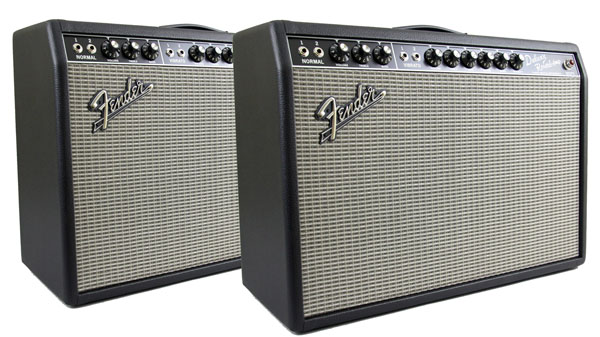
Sold to CBS
Leo Fender sold his companies to the Columbia Broadcasting System (CBS) for $13 million ($126 million in 2023 adjusted for inflation).[11][12] This was almost two million more than CBS had paid for an 80% stake in The New York Yankees a year before.
Quality Decreases with cost cutting
Several cosmetic changes occurred after 1965/1966, such as a larger headstock shape on certain guitars. Bound necks with block shaped position markers were introduced in 1966. A bolder black headstock logo, as well as a brushed aluminum face plate with blue or red labels (depending the model) for the guitar and bass amplifiers became standard features, starting in late 1968.
Fender rules Punk, and Disco!
By late 1976, punk rock has fully emerged through Fender-toting bands like the Ramones, Talking Heads and Television in the U.S. and Elvis Costello, the Sex Pistols and the Clash in the U.K., blazing a new trail for those who rejected the mainstream. Ironically, Fender instruments are equally ubiquitous on disco records of the day, the antithesis of punk. Chic's Nile Rodgers, for one, charted innumerable with his iconic 'Hitmaker" Stratocaster.
LAUNCH OF MTV
In an effort to elevate Fender's status in the musician's community, the Fender Custom Shop opened to fulfill one-off orders, cater to the world's most renowned players and create works of art within the context of Fender's legacy instruments. The concept was an immediate hit and continues to flourish as Fender's crown jewel to this day.

Strat redesign
In 1983, the Fender Stratocaster received a short-lived redesign including a single ("master") tone control, a bare-bones pickguard-mounted output jack, redesigned single-coil pickups, active electronics, and three push buttons for pickup selection (on the Elite Series).
Employee buyout
In 1985, in a campaign initiated by then CBS Musical Instruments division president William Schultz (1926–2006), the Fender Electric Instrument Manufacturing Company employees purchased the company from CBS and renamed it "Fender Musical Instruments Corporation" (FMIC). The sale did not include the old Fullerton factory; FMIC had to build a new facility in nearby Corona. The vast majority of Fender guitars sold in 1985 were made in Japan.[
FENDER CUSTOM SHOP OPENS IN CORONA, CA
Eric Clapton and Yngwie Malmsteen team with Fender on designing the company's first-ever signature models, the Eric Clapton Stratocaster and Yngwie Malmestten Stratocaster.

FIRST ARTIST MODELS UNVEILED
The debut album by Seattle's Nirvana issues in the "grunge" movement and turns the pop music world on its ear. Singer/ songwriter Kurt Cobain predominantly played Fender Jaguar, Jaguar or Strat guitars, which can be heard on such hits as "Smells Like Teen Spirit," "Come As You Are, Lithium" and "In Bloom."
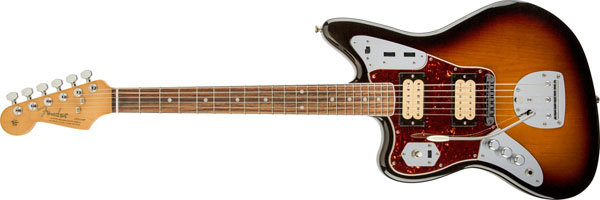
Made in Mexico
In 1987 Fender established a small manufacturing facility in Ensenada, Baja California, Mexico and in 1990 Fender and their Japanese partners FujiGen started guitar manufacturing in the city. Mexican Fenders appeared in the catalog from January 1991.
FIRST FEMALE SIGNATURE ARTIST: BONNIE RAITT
Adding some grit to the classic Fender clean sound with drive and more drive circuits, the Hot Rod Series would soon become the No. I-requested backline amp around the globe.
DIGITAL MODELING CYBER-TWIN AMPLIFIER INTRODUCED
Fender Play launches, giving aspiring guitarists of all levels an easily accessible and complete way to learn guitar and join a growing and engaged community of like-minded players.

Bigsby Aquisition
In January 2019, Fender purchased the Bigsby Electric Guitar Company from its partner Gretsch.
Presonus Aquisition
In November 2021, Fender purchased the Louisiana-based PreSonus Audio Electronics, a manufacturer of professional audio equipment and software (I have a Studio 24C and it's good!)